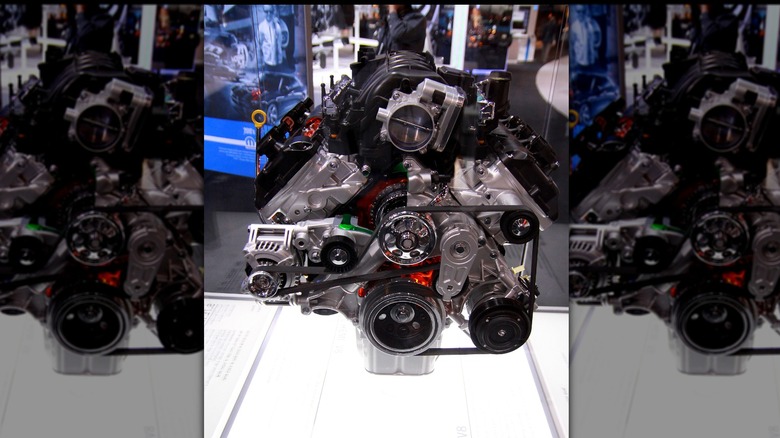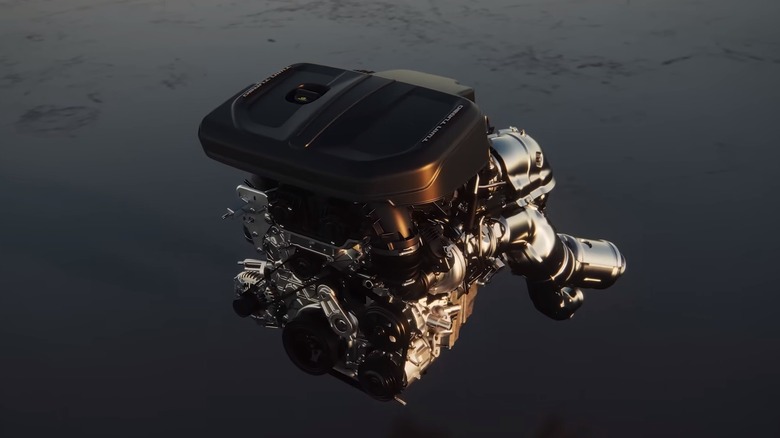Differences Between Hemi & Non-Hemi Engines
If you are even a casual fan of performance automobiles, the name "Hemi" is likely something you are familiar with. Thanks partly to ingenious marketing that made it a household name, Hemi is synonymous with powerful engines that offer potent displays of strength. "That Thang Gotta Hemi? Sweet!" was just one in a series of commercials from years back touting the engine type on the Dodge Ram. Beyond the hype, a Hemi, or hemispherically shaped combustion chamber, is a different engine configuration with advantages and disadvantages compared to non-Hemi engines.
The iconic Hemi rose to fame at the 1964 NASCAR Daytona 500. Chrysler, a major automotive manufacturer, equipped its race car with the pioneering hemispherical cylinder head design and dominated the event. Later, several muscle cars, such as the Dodge Charger, Plymouth Cuda, Dodge Challenger, and Dodge Dart, featured a Hemi. The 1966 Plymouth Belvedere started the trend of calling Chrysler's 426 Hemi "The Elephant." Although considered legendary today, only 11,000 426 Hemi-powered cars were made in the muscle-car heyday, according to Stellantis North America. There have been several iterations of Chrysler's monster-under-the-hood, and here's a rundown of every major Hemi engine's rank from least to most horsepower.
Why choose a Hemi engine?
When looking at variations between a Hemi and a non-Hemi engine design, the former alters the cylinder head to a rounded dome-like shape. This unusual shape affords some benefits over other engine options. The intake and exhaust valves are angled, increasing the pressure within the cylinder walls and lowering the surface area. The reduced surface area of the domed configuration enables more heat generation. The greater the surface area inside the chamber, the more combustion energy is absorbed, reducing power levels.
The half-sphere cylinder head and angled valves also enhance pressure build-up as the piston moves up and down. The rounded shape helps facilitate waves of pressure, creating peak levels inside the combustion chamber and effectively increasing the available space for air, fuel, and exhaust output. With more significant air and fuel in and more exhaust out, the hemispherical configuration on a Hemi can produce impressive output. However, other engine variants are lighter, take up less space, and offer enhanced fuel efficiency.
Non-Hemi advantages
Since Hemi engines are impressive, you're probably wondering why every engine has yet to adopt a similar design. One problem with a Hemi is that its unique cylinder head and valve placement require the engine components to be resituated to avoid obstructions. The unfortunate byproduct of this rearrangement is a much more substantial footprint that adds greater dimensions and weight.
Some of the first Hemi's reportedly tipped the scales at up to 1,000 pounds before Chrysler began improving its engine builds. The difference in weight between Hemi and non-Hemi engines is much smaller now but still impactful; for example, the Chrysler 5.7-liter 345 Hemi V8 is 560 pounds, but the new high-output twin-turbo 3.0-liter Hurricane inline-6 weighs only 430 pounds.
As robust as the Hemi engine is in terms of power, it's inefficient compared to other engines. In fact, the 2025 RAM 1500 is ditching the Hemi V8 for a new Hurricane engine that's reportedly as much as 15% better in fuel economy. The Hurricane inline-6 also creates upwards of 15% less carbon dioxide, and the more robust high-output variant beats the Hemi V8 in terms of both horsepower and reduction of harmful emissions. For more information on this new non-Hemi variant, here is why Stellantis' twin turbo I-6 engine deserves its Hurricane name.


